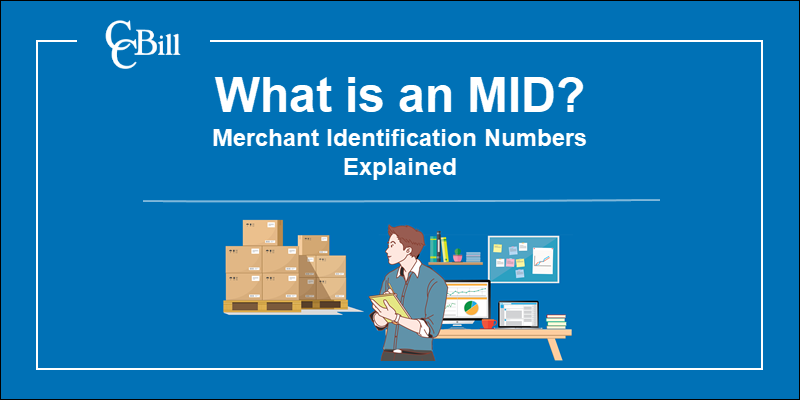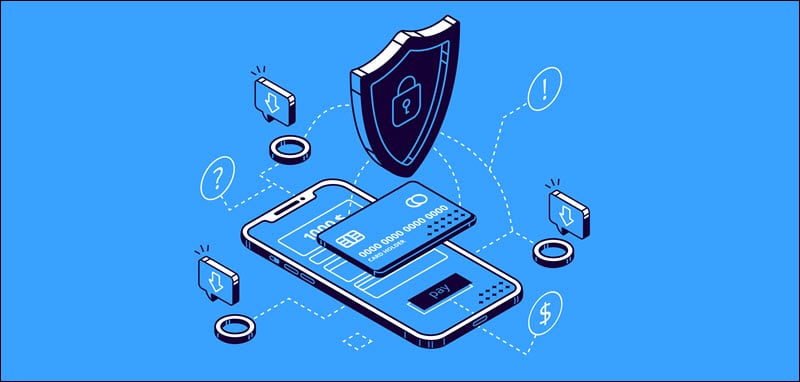Introduction
Banks, payment processors, and card networks continuously monitor and analyze electronic payments to guarantee the integrity of each transaction. Every transaction event leaves an electronic trail that contains unique designations that identify the participants in the payment process and their actions.
An MID (Merchant Identification Number) is the merchant’s designation. It identifies the merchant and is essential for facilitating transactions and resolving payment disputes.
Find out how MIDs work and if you need one to accept online payments.

What Is a Merchant ID (MID)?
A Merchant Identification Number (MID) is a unique numerical code acquiring banks assign to merchant accounts. The MID serves as an identifier that establishes that a transaction was initiated with a specific merchant.
Financial institutions and other participants in the payment process collect, cross-reference, and validate MIDs along with customer information and additional transactional metadata (i.e., Transaction ID, BIN, MCC) before authorizing a transaction.
Do All Businesses Need a MID?
Merchants who open an account with a payment service provider (PSP), like CCBill, Stripe, or Braintree, do not need an MID to accept payments.
The PSP has an MID and is the nominal merchant in the payment processing workflow. The transactions a PSP processes for its various clients (merchants) all have the same MID.

Merchants should not confuse internal designations they receive from their PSP, such as a merchant account number, with an MID. Payment service providers use internal designations to process and monitor transactions and reconcile funds accordingly. These designations are only valid within the PSPs systems.
Businesses that want to accept payments directly from customers, without using third-party providers, need to open a processing account with their acquiring bank and obtain an MID.
How Do MIDs Work?
Merchant acquirers and the customer’s bank (issuer) rely on unique identifiers, like MIDs, when determining whether a transaction should be approved or denied, or if requires additional authentication.
For example, issuers may charge customers added fees for using their payment cards abroad. The MID is one of the parameters issuers reference to determine the merchant’s country of origin.

A simplified example of a card payment flow shows why MIDs are integral to the payment process:
- When a customer initiates a payment, the cardholder’s data, the MID, and other transactional data are transferred to the acquirer.
- The acquiring bank validates the data, including the MID, and sends an authentication request to the customer’s issuing bank.
- The issuing bank verifies the customer’s identity and checks if the customer has enough money in their account.
- Issuers approve or decline the transaction and forward this information to the acquirer.
- If the transaction is authorized, the funds are deposited to the merchant’s processing account using the MID as the identifier.
Acquirers and issuers cannot authenticate or authorize transactions without an MID. Businesses need to obtain an MID to accept payments, either by opening a processing account, or by using the services of a PSP.
Note: Learn everything you need to know about payment processing by referring to our article What Is a Payment Processor?
How to Get a Merchant ID for Payment Processing?
Merchants receive an MID when they open a merchant account with an acquiring bank. The bank performs a KYC check and asks potential merchants to provide valid documentation to verify the legal status of their company. The acceptable forms of identification often include:
- An ID or passport belonging to the business owner, principals, joint holders, controllers, mandate holders, or legal representatives
- Tax returns
- Articles of incorporation or a business license
- Proof that a business is registered with a government agency
Merchants typically undergo an underwriting process before the acquirer approves their account. During this process, the acquirer analyses the risk factors associated with the merchant’s business activities.

Banks may also require merchants to deposit funds to serve as collateral before allowing them to accept credit card payments.
Can You Get Multiple Merchant IDs?
MIDs are attached to merchant accounts. The acquirer may request that a merchant opens multiple processing accounts for different business models. For example, if a merchant sells products online and has retail stores with POS terminals, they need to open distinct merchant accounts for each model, for which they will receive different MIDs.
Separate accounts and MIDs allow merchants and other participants in the payment process to manage the different risk levels associated with specific business models.
How to Find Your Merchant ID?
Merchants can look up their identification numbers in several ways:
- Contract. The merchant and acquirer sign a processing agreement that contains merchant account information, including the MID.
- Monthly Statements. Acquirers provide merchants with monthly merchant statements that list transactions registered on their merchant accounts. The report includes the merchant identification number.
- POS Terminal. Each POS terminal has a sticker that states the merchant’s MID.
- Terminal Receipts. Every receipt a POS terminal prints contains the MID.
- Merchant Admin Portal. Acquirers usually create merchant interfaces (dashboards) where merchants log in to manage their accounts. From these portals, merchants can typically retrieve information relevant to the account’s status, including the MID.
Can You Lose Your Merchant ID?
Payment processing rules and regulations compel acquirers to screen clients, protect customer data, and guarantee the validity and security of each transaction. If acquiring banks suspect fraudulent activity, they may close the merchant account. Without an account, the merchant no longer has a valid MID and cannot accept payments.
Acquirers accept financial responsibility for payments initiated on the merchant’s behalf and are therefore determined to reduce the risk of potential disputes and prevent payment fraud.

Also, issuing banks and card networks want to ensure that the customer is making the payment to a reliable and legitimate business. Merchant accounts with excessive chargebacks and repeated refund requests may indicate illegal activity and serve as a basis for the acquirer to terminate the account.
Note: Acquiring banks and card companies monitor merchants’ chargeback rates closely. Read more about what a chargeback rate is and how financial institutions calculate it.
How to Protect Your Merchant ID and Merchant Account
To protect accounts from undue chargeback requests, merchants should:
- Implement a straightforward refund and return policy. Do not force customers to jump through hoops if they are not satisfied with a product or service. Even though refunds are not a desirable outcome, they are preferable to chargebacks.
- Authenticate customers. Prevent payment fraud and avoid chargebacks by using AVS and other advanced payment authentication tools.
- Set up 24/7 customer service. Chargeback requests are often the result of a lack of information or merchant engagement. Round-the-clock customer service can mitigate customer complaints effectively.
- Analyze chargeback reports. Review chargebacks and look for patterns. For example, if certain products or price points result in higher chargebacks, reassess the viability of selling such products. Additionally, merchants can block sales in countries or regions with unusually high chargeback levels.
- Keep your business information up to date. Customers should always know who they bought the product from and how to get in touch with the merchant.
- Make your statement descriptors easily identifiable. A mismatch between business information visible on customer bank statements and the information displayed on the merchant’s website can confuse buyers.
- Reduce the number of steps it takes to cancel a subscription or order. If you allow dissatisfied customers to cancel their purchases in a user-friendly way, they are less likely to initiate lengthy chargeback requests.
Implementing some of the listed processes and tools can be costly. Merchants with fewer resources should look to established PSPs who provide quick, secure, and cost-effective payment processing solutions.
Conclusion
You know how merchant identification numbers work, where to look up your MID, and how to obtain one from an acquirer.
Whether you open a processing account with an acquiring bank or use the services of a payment service provider, you need to protect your merchant account and prevent chargebacks.
Choosing the right payment processor helps merchants reduce risk management and fraud prevention costs. This is especially important for merchants with a high-risk business model.
